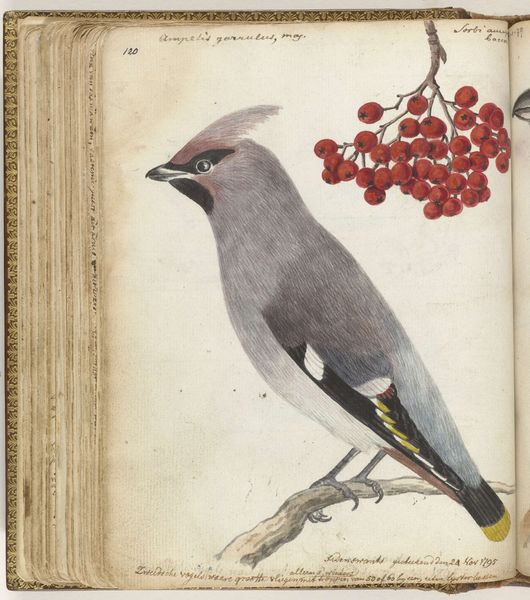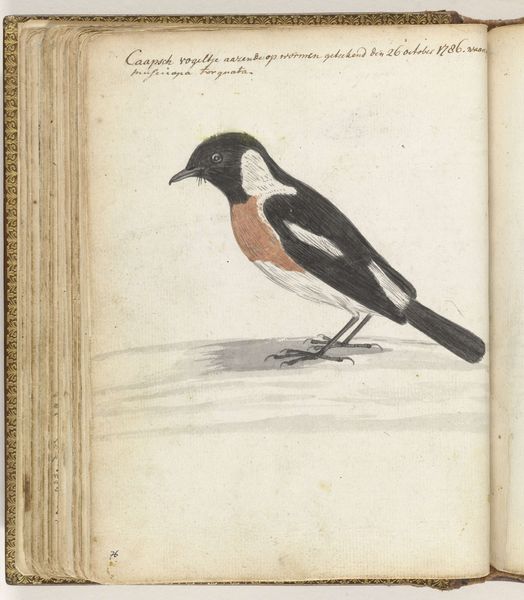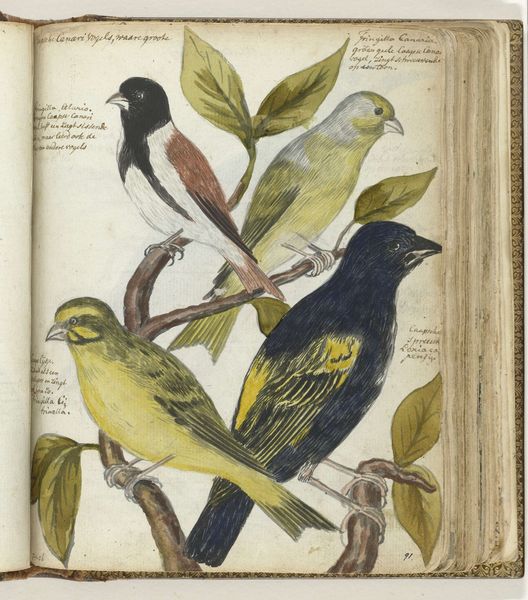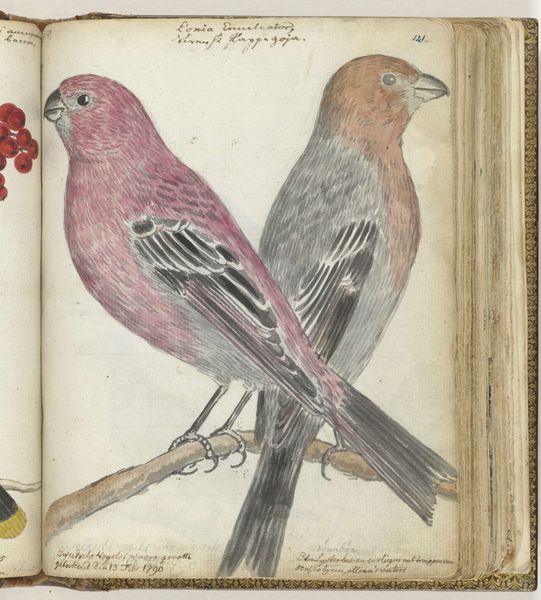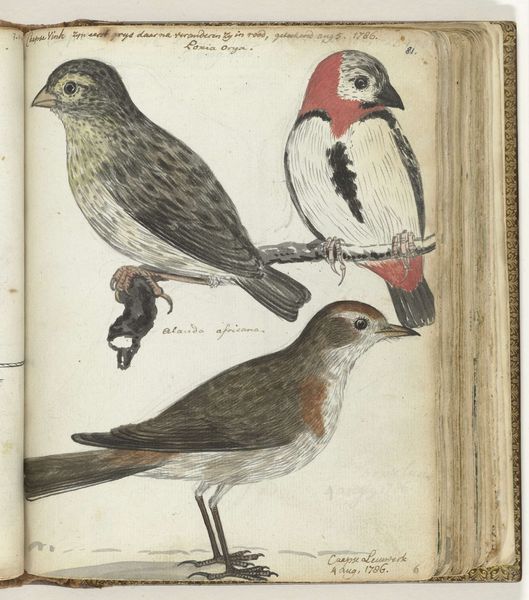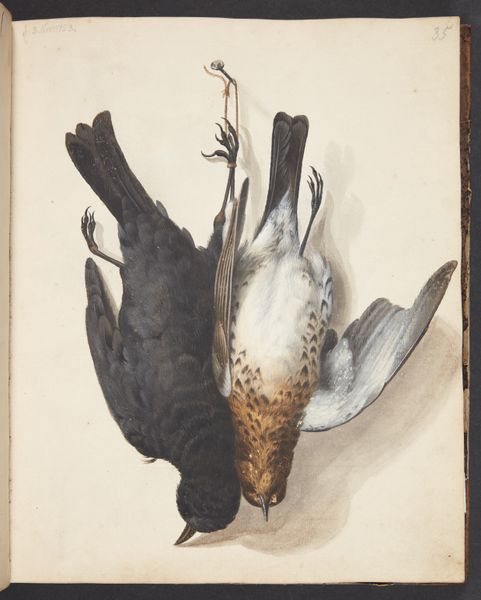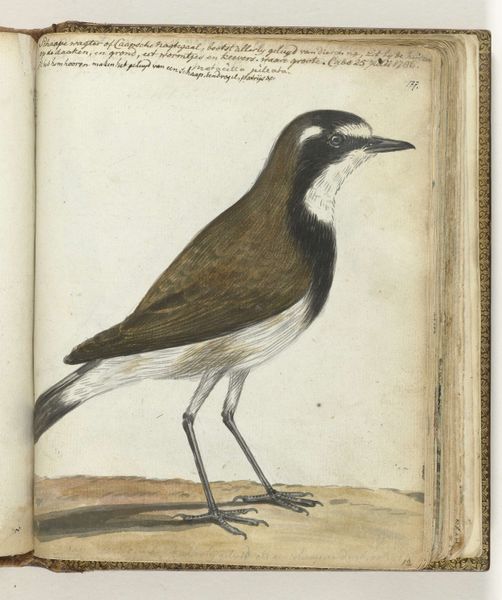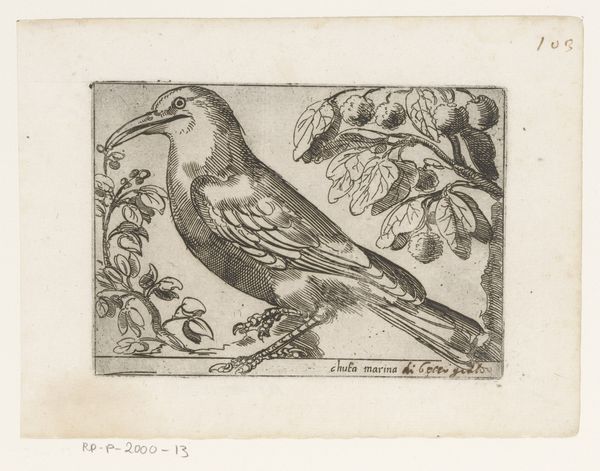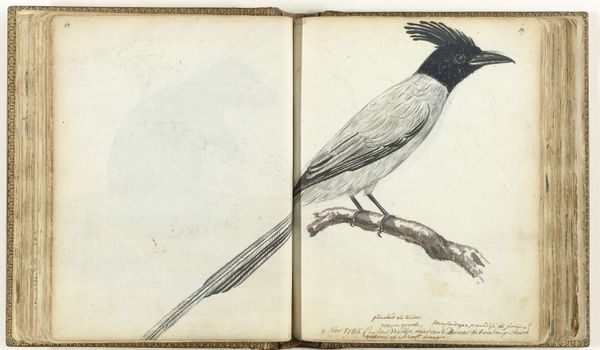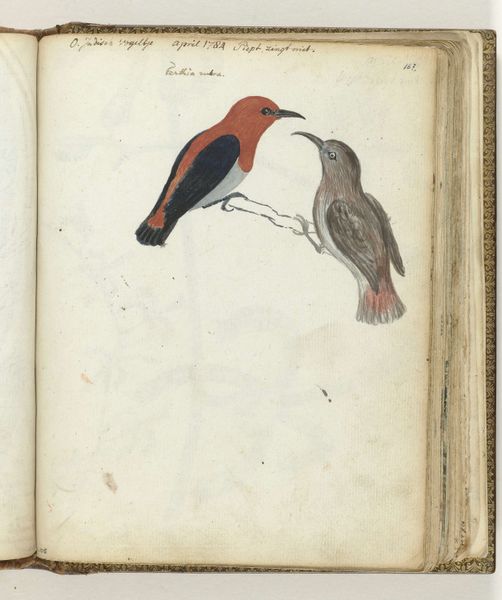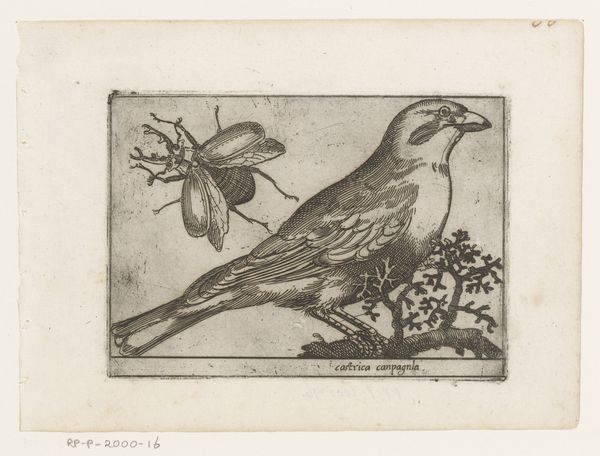
drawing, watercolor, pencil
#
drawing
#
water colours
#
dutch-golden-age
#
bird
#
watercolor
#
fruit
#
coloured pencil
#
pencil
#
naturalism
Dimensions: height 195 mm, width 155 mm
Copyright: Rijks Museum: Open Domain
Editor: This is "Wagtail with Fruit," possibly from 1785, by Jan Brandes. It’s a watercolor and pencil drawing. I’m immediately struck by how delicate the linework is, especially on the bird. What can you tell me about the way the artist used the formal elements here? Curator: Notice the careful application of line, the clear delineation defining form. The bird's form is constructed through a combination of precise contour and subtle gradations of shading achieved via pencil and watercolor washes. The composition depends upon stark contrast: observe the chromatic restraint applied to the wagtail alongside the vibrant hues of the fruit, drawing the viewer’s eye towards both elements. Have you considered how the fruit contributes to the drawing? Editor: Well, I see that the colours definitely stand out and emphasize the shapes, but the fruit itself is so strange and almost bulbous. I'm used to seeing fruit represented differently in art from this period, especially in still-life paintings. Curator: Consider the structure. The roundness of the fruit, its interior exposed in one instance, create a series of organic shapes that offset the relative angularity of the bird's posture. Notice how the shadow operates. Brandes skillfully deploys shadow to anchor the fruit within a three-dimensional space. How might you describe the relationship between the depicted subject and the page itself? Editor: The fruit appear to sit more convincingly within the space because of the shadowing, and that highlights the almost scientific approach the artist might have taken to capturing what he saw. Also, I notice how some handwritten text fills up any negative space. Curator: Exactly. The formal structure and materiality serves the function. These are, in essence, observations meticulously recorded with an eye for detail. The inscriptions become as much a part of the composition as the subjects they describe. Editor: So, the interplay of form and function leads us to an even deeper understanding. Curator: Precisely, by considering how technique informs observation we come to a fuller appreciation of the artwork.
Comments
No comments
Be the first to comment and join the conversation on the ultimate creative platform.
